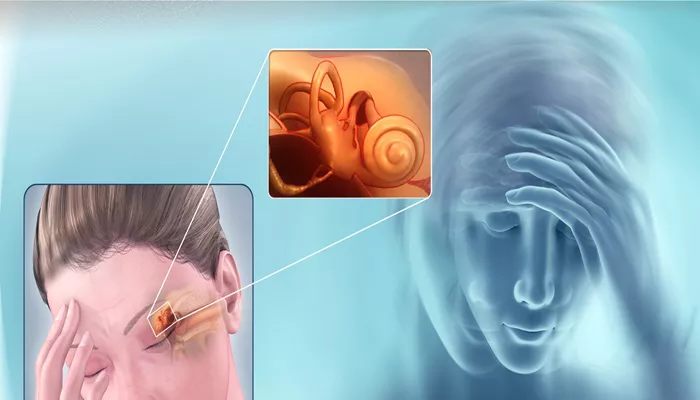Spontaneous intracranial hypotension (SIH) is a medical condition characterized by low cerebrospinal fluid (CSF) pressure within the cranial cavity, often leading to debilitating headaches and other neurological symptoms. This condition arises not from external trauma or surgical intervention but from spontaneous leaks of CSF, typically originating from the spinal region. Understanding the causes of SIH is crucial for accurate diagnosis and effective treatment.
What Is Spontaneous Intracranial Hypotension?
Intracranial hypotension occurs when the pressure of CSF, which surrounds and cushions the brain and spinal cord, falls below normal levels. This drop in pressure can lead to various symptoms, primarily severe headaches that worsen when standing and improve when lying down. Other symptoms may include nausea, dizziness, tinnitus (ringing in the ears), and visual disturbances.
The primary mechanism behind SIH is a leak in the dura mater, the tough membrane that encases the brain and spinal cord.
This leak allows CSF to escape, reducing its volume and consequently lowering the intracranial pressure.
Root Causes of Spontaneous Intracranial Hypotension
The causes of SIH can be broadly categorized into several types based on the nature of the CSF leak:
1. Dural Tears
Type 1: Ventral Dural Tears
These are the most common cause of spontaneous leaks, accounting for approximately 40% of cases. They typically occur in the upper thoracic spine and are often associated with degenerative changes such as calcified disc protrusions.
Type 2: Lateral Dural Leaks
These leaks are linked to meningeal diverticula, which protrude through defects in nerve root sleeves. They are more common in the lower thoracic region and account for about 17% of SIH cases.
2. CSF-Venous Fistulas
Type 3: CSF-Venous Fistulas
These occur when there is an abnormal connection between CSF pathways and venous structures, leading to CSF escaping into veins.
These types of leaks are often associated with meningeal diverticula as well and are responsible for about 23% of SIH cases.
3. Distal Nerve Root Sleeve Leaks
Type 4: Distal Nerve Root Sleeve Leaks
These are rare and occur due to congenital defects where there is a focal absence of dura surrounding nerve roots. This type of leak is less common but can still contribute to SIH.
Additional Causes
In addition to these primary causes, several other factors may contribute to spontaneous intracranial hypotension:
Congenital Defects: Some individuals may have inherent weaknesses in their dura mater that predispose them to leaks.
Trauma: While SIH is termed “spontaneous,” it can sometimes follow minor trauma that might not initially seem significant.
Iatrogenic Causes: Although not classified as spontaneous, previous medical interventions such as lumbar punctures or surgeries can lead to dural tears that result in SIH.
Connective Tissue Disorders: Conditions that affect connective tissue may also increase the risk of dural weakness or tears, contributing to SIH.
Symptoms of Spontaneous Intracranial Hypotension
The hallmark symptom of SIH is a positional headache that worsens upon standing and improves when lying down. Other symptoms may include:
- Nausea
- Vomiting
- Dizziness or vertigo
- Tinnitus
- Visual disturbances (blurred or double vision)
- Facial numbness or tingling sensations in extremities
Diagnosis of Spontaneous Intracranial Hypotension
Diagnosing SIH can be challenging due to its overlap with other conditions. A thorough clinical history focusing on headache characteristics is essential. Imaging studies such as magnetic resonance imaging (MRI) can reveal signs consistent with low CSF pressure, including brain sagging or subdural hematomas.
Treatment Options for Spontaneous Intracranial Hypotension
Management strategies for SIH focus on alleviating symptoms and addressing the underlying cause:
Conservative Measures: Initial treatment often involves bed rest, increased fluid intake, caffeine consumption, and pain management with analgesics.
Epidural Blood Patch: If conservative measures fail, an epidural blood patch may be performed. In this procedure, a small amount of the patient’s own blood is injected into the epidural space to help seal the leak.
Surgical Intervention: In cases where a specific leak site can be identified through imaging techniques like CT myelography, surgical repair may be necessary. This involves locating the dural tear and patching it surgically.
Conclusion
Spontaneous intracranial hypotension is a complex condition primarily caused by leaks in the dura mater leading to decreased cerebrospinal fluid pressure. Understanding its causes—from dural tears to congenital defects—enables healthcare providers to diagnose and treat this condition effectively. With appropriate management strategies ranging from conservative care to surgical interventions, patients can achieve significant relief from symptoms and improve their quality of life.
Related topics:


